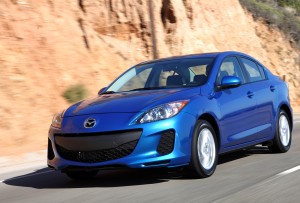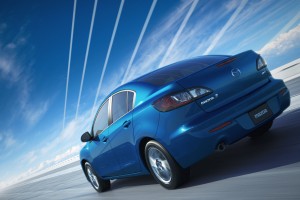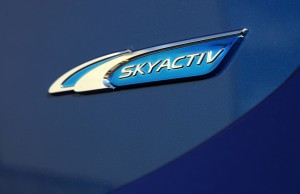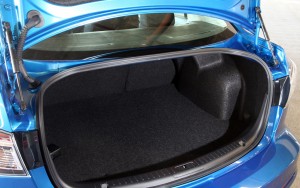Everyone who is fortunate enough to drive new cars and write reviews about them has their favorites. They may claim to objectively view every car that shows up in their driveway, but ultimately, they look forward to a week with that certain car. Their biggest worry becomes whether the automaker has done something to upset the delicate balance that makes a car great.
For us, that car has long been the Mazda3. Previous opportunities to drive the 3 – we’re referring to the regular version because the hot-rod MazdaSpeed 3 version is just too much of a torque-steering monster and doesn’t occupy the same place in our thoughts – revealed sublime handling, excellent ride and a sporty, well-designed and well-finished interior.
But the need for automotive progress never stops as carmakers struggle to serve disparate masters.
It would seem that one of those masters – fuel economy – has driven Mazda to reduce the 3’s freeway handling prowess.
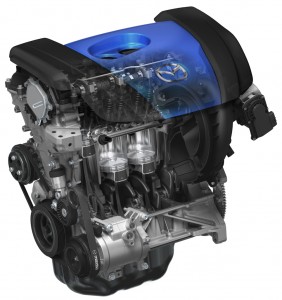
Mazda's Skyactiv engine technology includes high-tech features such as direct injection and ultra-high compression along with friction-reducing tricks to extract maximum fuel mileage.
While previous 3s tracked well at high speeds with little effort, this new edition of the 3 doesn’t feel right. It wanders like a bloodhound trying to pick up a scent and leans uncomfortably when corrected, which is often.
This Mazda3 has the Japanese maker’s new 2.0-liter, 155-horsepower engine, dubbed Skyactiv-G. The engine combines relatively new technology such as direct injection, an ultra-high compression ratio and tricks to reduce internal friction – such as using W20 oil – all aimed at using less fuel. The result is 27 mpg city, 39 highway for this manual-equipped version. This version doesn’t quite achieve the 40 mpg number – although there are versions of this car that do carry that magic 40 highway number – but with 155 horsepower, it has more power than some of the other compact 40ers.
Consider the fuel economy difference between the 2.0-liter engines. The base 2.0, called MZR, with a five-speed manual transmission is rated at 25 city and 33 highway. But the Skyactiv-G engine is rated at 27/39 with the six-speed manual. The Skyactiv with a six-speed automatic is, surprisingly, even better than the manual, rated at 1 mpg higher on both cycles.
But achieving lofty fuel economy involves more than just a fancy new engine. And that would seem to be the Skyactiv Mazda3’s undoing. We’re blaming the problem on the Bridgestone Turanza EL400 tires, size 205/55R16.
The car handles well on twisty roads with good grip. The tires provide decent traction on dry and wet roads and the tires are quiet. No problem there. But where they don’t do so well is in freeway cruising. In fact, at any speed under about 70, the 3 handles just fine.
Much of the rest of the car is very familiar. While we drove the sedan, there is also a five-door hatchback, as before. The sporty exterior design is updated, but familiar. The dash and center console are similar to previous 3s, but more swoopy and rakish, as is the current style for interior design.
But another mistake would seem to be the fabric color Mazda chose for this interior. Called Dune, the fabric’s color is anything but subdued and has too much contrast with the black in the two-tone interior.
The Mazda3 starts at $15,995, including destination for the four-door SVi sedan with the base 2.0-liter, 148-horsepower engine and a five-speed manual transmission.
The cheapest way to get the Skyactiv-G engine is the i Touring, starting at $19,300 with a six-speed.
The i Touring comes with a surprising amount standard equipment including 16-inch aluminum alloy wheels, six-speaker stereo with auxiliary-audio input jack, steering-wheel-mounted audio and cruise controls, Bluetooth, leather-wrapped steering wheel and shift knob, information display and trip computer.
The third available engine is a 2.5-liter four cylinder making 165 horsepower.
Typical of Mazdas, the transmission is a delight. The clutch is easy to modulate and the shifter moves smoothly, making finding the right gear a snap.
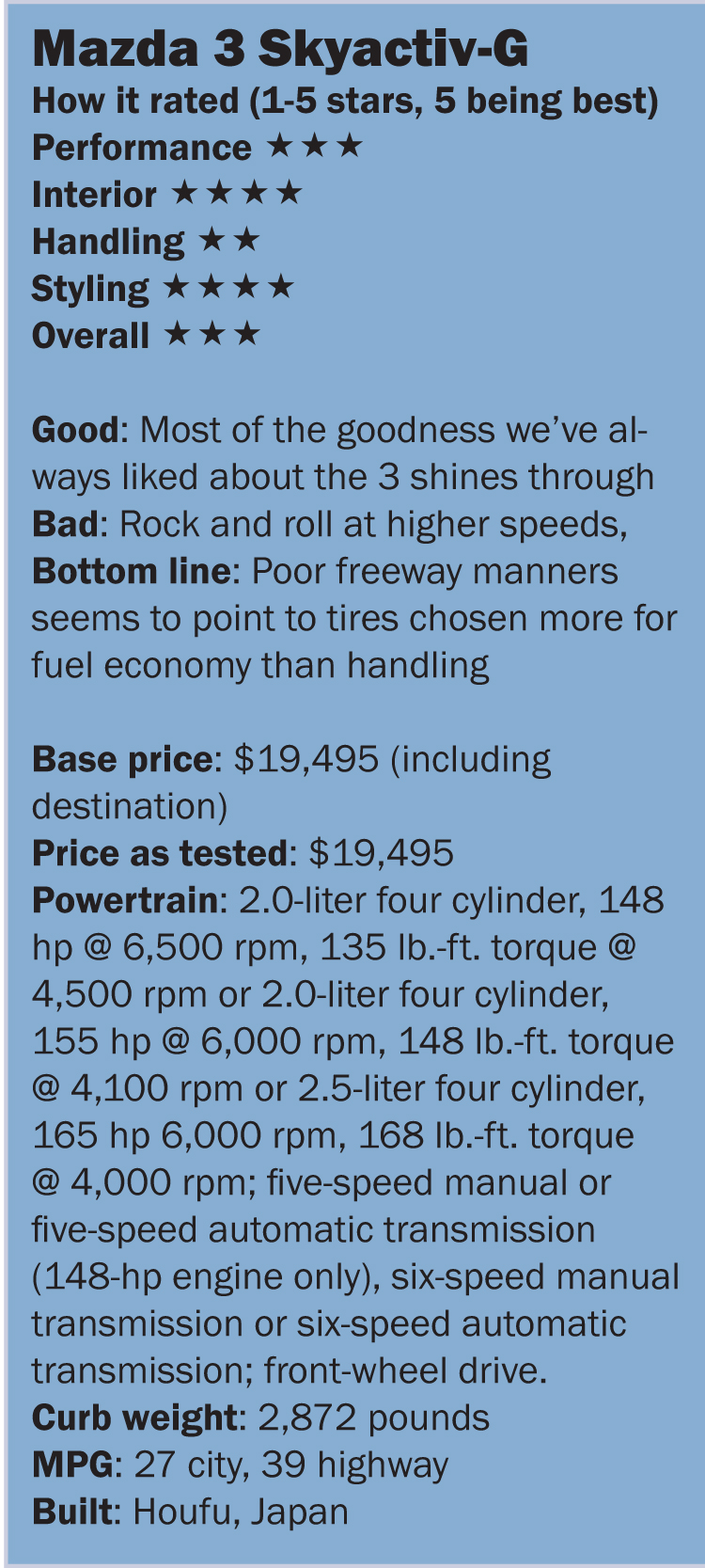 While the Mazda3’s highway handling is suspect, the car is otherwise a joy on the freeway. It rides well and it’s quiet. There is no torque steer – unlike it’s overeager brother, the MazdaSpeed 3.
While the Mazda3’s highway handling is suspect, the car is otherwise a joy on the freeway. It rides well and it’s quiet. There is no torque steer – unlike it’s overeager brother, the MazdaSpeed 3.
While the color of the seats seems a little jarring, they are comfortable. Those in front have plenty of space, including a cubby that is perfect for stashing a cellphone. Rear seaters have excellent headroom, but kneeroom is somewhat limited. There’s a center armrest that folds down, offering a pair of cupholders. Rear seaters don’t get their vents, however.
There’s 11.8 cubic feet of space in the trunk, but the opening is narrow, a product of the fast rear window.
Acceleration is surprisingly good for a car with a 39-mpg highway rating. What was a little disappointing was 34 mpg observed, mostly on a 440-mile roundtripper to Traverse City, Mich.
Skyactiv is more than just a new engine for Mazda. It’s a way of thinking that will eventually permeate everything about Mazda’s cars, from the body structures to the transmissions.
With the 3, the bones of a great little car are still here. There’s nothing here that a set of the right tires wouldn’t fix.

